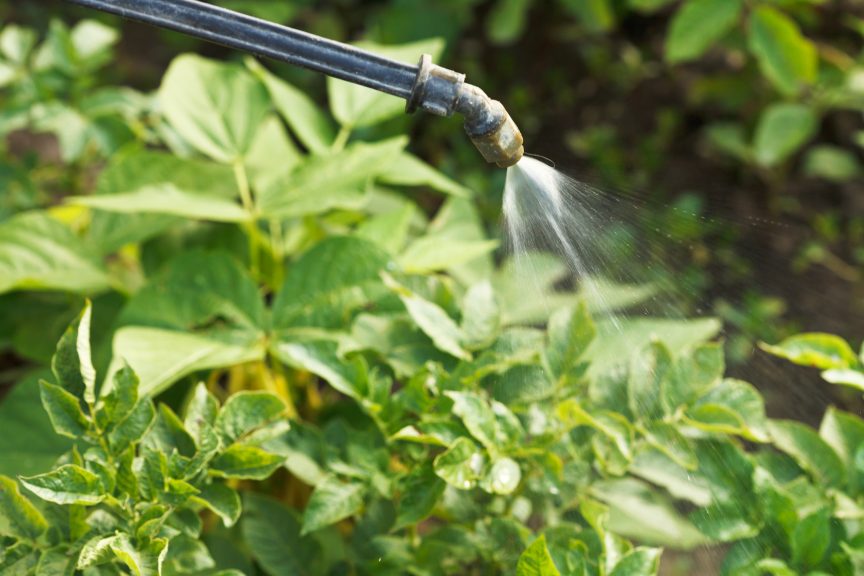If you’re looking for a weed-free lawn next spring, Fall is the perfect time to start thinking about controlling weeds in turf; in fact, it’s the best time to start the control of the most difficult of weeds.
Many experts consider fall weed control to be more effective than waiting to tackle weeds in the spring. Check out these three recommendations for fall weed control:
1. Remove Weeds in the Fall
By removing the weeds now in the fall, it makes it harder for the weeds to survive and decreases the chance of the roots sinking deeper into the soil. It is also easier to eradicate weeds in the fall when the growing cycle is more sluggish.
2. Stop Weeds Before Root Growth
Weeds grow in seasonal patterns. After a hot and dry summer, fall tends to have cooler temperatures which encourage both lawn and weed growth. It is also a favorable time because the weeds and turf begin to store energy for the winter and they send nutrients deep into their roots. When spraying herbicides on weeds in the fall, the active ingredients are then also carried down to the roots and kills the weeds at a deeper level.
3. Apply Herbicide in the Fall
Applying an herbicide in the fall will get rid of most weeds such as Creeping Charlie, plantain, dandelions, white clover and many thistles. These are herbaceous perennial plants, meaning that they live from year to year from the same root structures, but the above-ground growth dies back each fall. As the plant moves its food and energy to its roots for the winter, it will move systemic chemicals with it to kill the entire plant. While you may not see the results of your hard work right away, most of the weeds will disappear after the winter thus creating a more weed free lawn in the Spring.
Liquid VS Granular Weed Control Products
There are several products on the market that will effectively control fall germinating weeds. Liquid and granular are both effective but each has some advantages and disadvantages.
Granular
Granular products often come mixed with fertilizer, which can be convenient. If using a combination product, adjust fall fertilization schedules accordingly. The grass should be wet when applying a granular herbicide. This dampness causes the granular herbicide to stick to the foliage for maximum absorption. It is best to apply the product in the early morning when dew is present or after a rain. When liquids are used, there should be no additional moisture on the lawn for at least 24 hours after the application.
Liquid
Liquid herbicides normally are more effective than granular products. The turf should not be mowed for several days before and after the application to allow maximum uptake and translocation of the herbicide. Timing is important. It is best if there is not rainfall or water applied for at least 24 hours after the application.
Protect Fall Planted Grass Seedlings
Grass seed that was planted in the fall should not be treated with any herbicides until the new seedlings have been mowed two or three times (put into survival mode), depending on what chemical was applied. Always follow the labels. The label is the law in your state or local jurisdiction.
Let’s Review a Few Things:
Because we are rapidly approaching the best time of the year for controlling most perennial broadleaf weeds, fall is the best time to apply broadleaf herbicides. Broadleaf applications made during October and November are more effective at killing the entire weed rather than merely burning off the top which is likely with spring applications. Winter itself appears to help out. While the herbicide might kill many weeds outright, still more weeds may be weakened to the point of succumbing to winterkill. The end result is less weedy flowers in the spring including those pesky yellow dandelions. So, rake, remove or mulch those leaves this fall and walk the lawn to look for weeds to eradicate. Consider treating them now rather than waiting until they flower in the spring. You will thank us for it!!
7 Tips for Improving Weed Control During the Fall:
- Apply during sunny days when temperatures are above 55 degrees
- Always check the weather forecast to ensure it won’t rain after your application
- Remove, mulch or rake leaves before treating. Mulching is best.
- Avoid mowing the newly treated turf for several days after application
- Spray applications are usually always more effective than granular when applied correctly
- Application should be uniform and at the correct rate (just because 1 is good, two is not always better)
- Always follow the directions on the herbicide label. Remember the label is the law whether federal, state or local.
Finally, rely on Central to help, whether it’s questions about weed control, the newest innovations in agronomics, organic & low-impact programs, or finding the right solutions for a problem area. We stay at the leading edge of the industry and we’re ready to help you grow!
About Bob Hartman
Bob Hartman is an industry veteran with more than 15 years of experience in the green industry; specifically, turf. Bob brings a solid background in both the organic and synthetic methods of feeding turf and plants. His diverse background and experience on the manufacturing makes him an excellent resource to help you grow your business.

